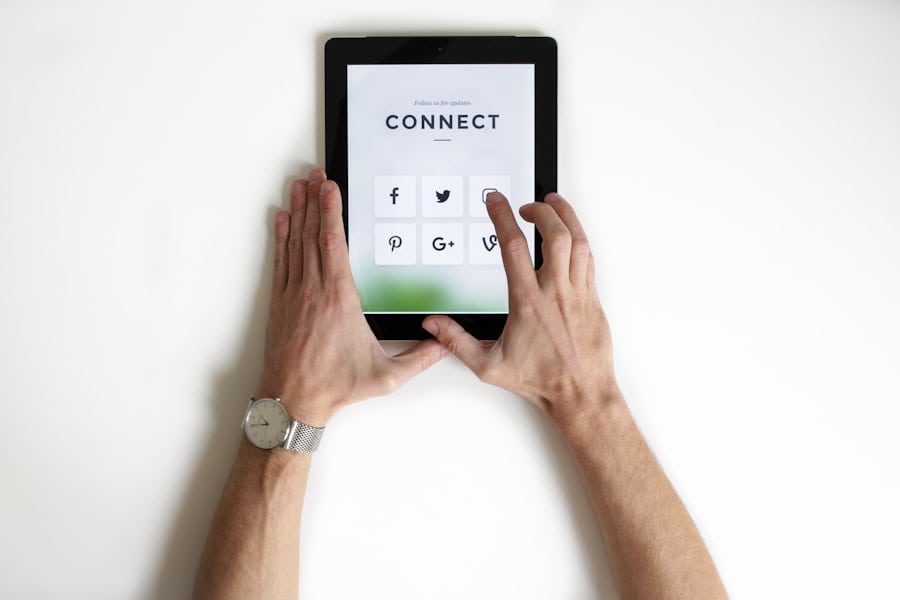The digital divide refers to the disparity between individuals who have access to modern information and communication technology and those who do not. This gap is not merely a matter of having the latest gadgets; it encompasses a broader spectrum of issues, including internet connectivity, digital literacy, and the ability to leverage technology for personal and professional growth. The implications of the digital divide are profound, affecting education, economic opportunities, healthcare access, and social inclusion.
In an increasingly interconnected world, the consequences of this divide can perpetuate cycles of poverty and inequality, leaving marginalized communities further behind. As technology continues to evolve at a rapid pace, the digital divide has become more pronounced. While developed nations enjoy high-speed internet and advanced technological infrastructure, many developing countries struggle with basic connectivity.
This disparity not only limits access to information but also hinders innovation and economic development. The COVID-19 pandemic has further highlighted these inequalities, as remote work and online education became essential for survival. Those without access to smartphones or reliable internet were left at a significant disadvantage, underscoring the urgent need to address the digital divide in a meaningful way.
Key Takeaways
- The digital divide refers to the gap between those who have access to digital technology and those who do not, impacting education, healthcare, and economic opportunities.
- Smartphone usage is on the rise in developing countries, providing a gateway to information, education, and improved healthcare access.
- Smartphones are valuable tools for accessing information and educational resources, particularly in areas with limited access to traditional educational infrastructure.
- Smartphones are improving healthcare access in underserved communities through telemedicine, health information dissemination, and remote monitoring.
- Smartphone usage has the potential to economically empower individuals in developing regions through access to financial services, market information, and entrepreneurship opportunities.
The Rise of Smartphone Usage in Developing Countries
In recent years, there has been a remarkable surge in smartphone usage across developing countries. According to a report by the International Telecommunication Union (ITU), mobile phone subscriptions in low- and middle-income countries reached over 5 billion in 2021, with smartphones accounting for a significant portion of this growth. This increase can be attributed to several factors, including the decreasing cost of smartphones, the expansion of mobile networks, and the growing recognition of the importance of digital connectivity for economic and social development.
Smartphones have become more than just communication devices; they are gateways to a wealth of information and services. In regions where traditional infrastructure is lacking, mobile technology has emerged as a vital tool for bridging gaps in access to education, healthcare, and economic opportunities. For instance, in countries like India and Kenya, mobile penetration has enabled innovative solutions such as mobile banking and e-learning platforms that cater specifically to underserved populations.
This trend signifies a shift in how technology is perceived and utilized in developing regions, highlighting the potential of smartphones to drive positive change.
Smartphones as Tools for Accessing Information and Education
One of the most significant impacts of smartphone proliferation in developing countries is its role in enhancing access to information and education. With the internet at their fingertips, individuals can access a vast array of resources that were previously unavailable to them. Educational platforms such as Khan Academy and Coursera have made it possible for learners to engage with high-quality content from anywhere in the world.
In many cases, these platforms offer courses in local languages, making education more accessible to diverse populations. Moreover, smartphones facilitate communication between students and educators, allowing for real-time feedback and support. In rural areas where schools may be under-resourced or understaffed, mobile technology can help bridge the gap by connecting students with qualified teachers through online tutoring services.
For example, initiatives like Bridge International Academies leverage mobile technology to deliver curriculum and assessments directly to students’ devices, ensuring that even those in remote locations receive quality education. This democratization of knowledge is crucial for empowering individuals and fostering a culture of lifelong learning.
Bridging the Gap: How Smartphones are Improving Healthcare Access
The healthcare sector has also experienced transformative changes due to the rise of smartphone usage in developing countries. Mobile health (mHealth) applications have emerged as powerful tools for improving healthcare delivery and access. These applications enable patients to schedule appointments, receive reminders for medication adherence, and access telemedicine services without needing to travel long distances to healthcare facilities.
In regions where healthcare infrastructure is limited, such innovations can be life-saving. For instance, in sub-Saharan Africa, mHealth initiatives have been instrumental in combating diseases such as malaria and HIV/AIDS. Programs like mTrac in Uganda allow health workers to report disease outbreaks via SMS, enabling quicker responses from health authorities.
Additionally, mobile applications like mHealth Kenya provide vital information on maternal health, helping expectant mothers access prenatal care and emergency services when needed. By leveraging smartphones for healthcare purposes, communities can improve health outcomes and reduce mortality rates significantly.
Economic Empowerment through Smartphone Usage
Smartphones are not only tools for communication but also catalysts for economic empowerment in developing regions. The ability to access information about market prices, weather forecasts, and agricultural best practices can significantly enhance the livelihoods of farmers and small business owners. For example, platforms like M-Pesa in Kenya have revolutionized mobile banking by allowing users to send money, pay bills, and conduct transactions using their smartphones.
This financial inclusion has empowered millions of individuals who previously lacked access to traditional banking services. Furthermore, smartphones facilitate entrepreneurship by providing access to online marketplaces where individuals can sell their products or services directly to consumers. E-commerce platforms such as Jumia have gained traction in Africa, enabling local vendors to reach a broader audience without the need for physical storefronts.
This shift not only boosts local economies but also fosters innovation as individuals explore new business models and opportunities that were once out of reach.
Challenges and Barriers to Smartphone Access in Underserved Communities
Despite the numerous benefits that smartphones offer, significant challenges remain in ensuring equitable access for all individuals in underserved communities. One major barrier is the affordability of smartphones and data plans.
This economic constraint can perpetuate existing inequalities and hinder progress toward closing the digital divide. Additionally, digital literacy poses another challenge. Even when individuals have access to smartphones, they may lack the skills necessary to navigate technology effectively.
This gap in digital literacy can prevent people from fully utilizing the potential of their devices for education or economic opportunities. Initiatives aimed at improving digital skills are essential for empowering individuals to harness technology’s benefits fully. Without addressing these barriers comprehensively, the promise of smartphones as tools for development may remain unfulfilled.
Initiatives and Programs to Increase Smartphone Access in Developing Regions
Recognizing the importance of bridging the digital divide, various initiatives and programs have emerged to increase smartphone access in developing regions. Governments, non-profit organizations, and private companies are collaborating to create solutions that address both affordability and digital literacy challenges. For instance, programs like “Internet.org” by Facebook aim to provide free basic internet services to underserved communities worldwide.
Moreover, organizations such as One Laptop per Child (OLPC) have expanded their focus from laptops to include mobile devices as part of their mission to enhance educational opportunities for children in developing countries. By distributing low-cost tablets or smartphones equipped with educational content, these programs aim to empower young learners with the tools they need for success in an increasingly digital world.
Such efforts are crucial for ensuring that all individuals have an equal opportunity to benefit from technological advancements.
The Future of Smartphone Technology in Bridging the Global Digital Divide
As we look toward the future, it is clear that smartphone technology will play an increasingly vital role in bridging the global digital divide. The ongoing advancements in mobile technology promise even greater connectivity and accessibility for underserved communities worldwide. However, realizing this potential requires concerted efforts from governments, private sector stakeholders, and civil society organizations to address existing barriers effectively.
The future landscape will likely see continued innovation in mobile applications tailored specifically for education, healthcare, and economic empowerment. As more individuals gain access to smartphones and develop digital literacy skills, we can expect a ripple effect that enhances overall community well-being. By prioritizing inclusivity in technological development and ensuring that no one is left behind, we can work toward a more equitable world where everyone has the opportunity to thrive in the digital age.
In addition to the role of smartphones in bridging the digital divide globally, it is also important to consider the tools and devices that can enhance our digital experiences. One such tool is free software for home remodeling, which can help individuals improve their living spaces and create a more comfortable environment. To learn more about the best free software for home remodeling, check out this article.
FAQs
What is the digital divide?
The digital divide refers to the gap between those who have access to digital technologies and those who do not, particularly in terms of internet access and usage.
How do smartphones help bridge the digital divide?
Smartphones provide a cost-effective and accessible means for people to connect to the internet, access information, and participate in the digital world, especially in regions with limited infrastructure for traditional internet access.
What role do smartphones play in global connectivity?
Smartphones have become a key tool for global connectivity, allowing people in remote or underserved areas to access educational resources, healthcare information, and economic opportunities.
What are some challenges in using smartphones to bridge the digital divide?
Challenges include affordability, network coverage, digital literacy, and language barriers. Additionally, the availability of relevant and localized content can impact the effectiveness of smartphones in bridging the digital divide.
How can smartphones be leveraged to address the digital divide in developing countries?
Efforts to address the digital divide in developing countries include initiatives to make smartphones more affordable, improve network infrastructure, provide digital skills training, and develop locally relevant content and applications.



